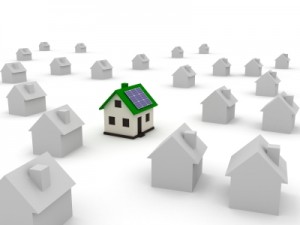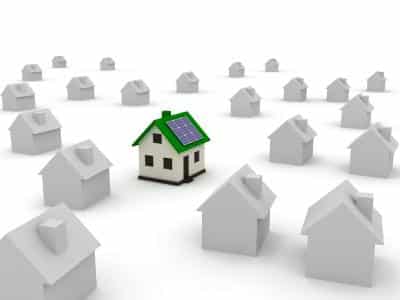Going off the grid is about living more efficiently, and for many it is also about getting ready for the dramatic environmental and societal changes that may be coming. But more than anything else, going off the grid is about finally taking complete and total control of your circumstances and the way you choose to live, and this is what motivates off-the-gridders who decide to construct their own brand-new dream homes instead of just purchasing something decent that has already been built.
But if this is what you want to do (and if it is, congratulations), what exactly should you include in your plans for your new humble abode? What are some of the features, addition, and design choices that can turn a house and a homestead into a place where your family can live happily, safely, efficiently, comfortably, and conveniently?
For each homebuilder, the answers to these questions will inevitably vary, and in some instances vary greatly. But the following list of suggestions are based on the discoveries and experiences of other off-the-gridders who have learned a lot about what works and what doesn’t, and the chances are excellent that those who plan to launch their own home construction projects soon will be able to benefit greatly from at least some of the advice that follows.
So without further adieu, here are fourteen ideas that can help turn your off-the-grid home construction project into a happiness-promoting, energy- and money-saving success.
 #1 – Choose Your Own Style, and Really Make It Your Own
#1 – Choose Your Own Style, and Really Make It Your Own
Housing in America has become increasingly synonymous with prefabricated single-family suburban sprawl. This trend has of course been going on for a long time, but if anything it appears that the cookie-cutter mentality of homebuilding is becoming even more entrenched than it was before. But if you are going off the grid, which is a bold step no matter how you slice it, there is no reason in the world you should allow yourself to be boxed in by the unimaginative choices of the larger culture.
It is ironic given the way things have been going, but the options available for the aspiring off-the-grid homebuilder have never been greater. So before you proceed, why not check them all out before making your final decision about what kind of home you would like to construct?
Your potential choices of materials and/or design styles include:
- Traditional stick frame
- Insulated concrete forms
- Mobile homes
- Log
- Structural insulated panel
- Manufactured
- Cob
- Brick
- Adobe
- Stone
- Steel container box
- Straw bale
- Tiny houses
- Earth berm
- Underground (this could be a really cool way to live, figuratively and literally)
- Yurts or teepees (maybe too “hippie” for some, but if you don’t have kids, it could be a cheap and interesting way to live in a moderate climate)
- Tree houses (every boy’s fantasy, but a few grown-ups have actually built them to full-size)
- Tents
Okay, so maybe you wouldn’t want to live in a tent, but you owe it to yourself to really look at all of the options before making your final decision.
#2 – Make a Place for a Fireplace
Few human inventions combine aesthetics and utility as effectively as a fireplace. For warmth in the winter, venting in the summer, and attractive living room enhancement all year ‘round, nothing beats the fireplace, and there are now a mind-boggling array of different models and styles available for the fireplace connoisseur. There is no doubt about it—centrally located fireplaces in living rooms with open floor plans are comfort promoters and energy savers extraordinaire.
#3 – Exploit Your Fireplace Completely
If you can design your home so there will be space for your hot water heater directly behind the fireplace (you are going to install one, aren’t you?), you may be able to cut down on your power requirements for water heating significantly. Also, if you plan to install a back-up furnace in your basement, you will want to place it directly beneath the fireplace so that the furnace fan will be able to pick up and distribute some of the intense heat radiating from above.
Everything You Need To Know To Keep Your Home And Family Safe.
#4 – Add Other Structures
Instead of putting everyone under one roof, why not add a cabin, garage apartment, or even a tree house to your homestead as a place for your children or for guests to sleep? This will allow you to build a smaller house that will be easier to heat and cool, and the residents of your other sleeping quarters could rely on wood heat, lanterns, and other energy-saving technologies to help keep your overall power demands down.
If you let the kids sleep in the cabin or tree house, they would probably consider it an adventure and get a big kick out of it, and if you included a garage apartment, you could use it for guests or even rent it out as a way to bring in some extra money. As your kids get older, a garage apartment helps give both them and you the space you need from one another without sending them away to live. And as things begin to look bleak, keeping them close, in spite of their desire to move on, might be the best for your whole family.
Direct contact with the ground will help to keep a house cool in summer and warm in winter, thanks to the natural insulating properties of the earth. If you dig out a spot and build into a hillside, your back (north, presumably) wall would be extensively protected, and this could help to significantly moderate indoor conditions when the temperatures outside are extreme. Generally speaking, east, west, and north walls built partially or completely below ground level will noticeably reduce your heating and cooling costs, and if the natural landscaping of your homestead gives you the opportunity to construct your home in this way, you would be smart to do so. And even if your landscape isn’t conducive, you can always use backfill to achieve the same result.
#6 – Two Floors are Better than One
If there are two houses with the same square interior footage, but one of these homes has two stories while the other has only one, the two-story home will be easier to heat or cool regardless of whether you are using active or passive methods. You will also use up less lot space if you construct a two-floor house. Another added benefit is that two-story home designs provide interior environments that offer more privacy and more aesthetic variety.
#7 – Put Sloped Ceilings on the Top Floor
Top floor ceilings that slope toward the north will promote improved airflow, reduce the amount of interior space that must be heated or cooled, and add a little architectural spice that can be quite pleasing to the eye.
#8 – Be Smart with Your Windows
South windows play a constructive role in the wintertime by allowing the natural heat of the sun to penetrate deeply into a home’s interior. But windows on the other three sides of the home are always a source of trouble, since leakage will inevitably facilitate unwanted inside-outside air exchanges. So if you live in a climate that experiences temperature extremes during at least one season, you might want to consider putting in vents instead of windows on your north, east, and west walls. You will want to be able to keep the air flowing through on hot days, so you should at least put in vents, but with respect to windows, you might want to consider having fewer of them if you don’t mind sacrificing some potential sources of natural light.
#9 – Install Sliding Shutters on Your South Windows
South windows are actually a mixed bag, with both pros and cons for you to consider. Yes, it is true, you will get more free heat during the winter and more natural light all the time, but on the other hand you will also have to deal with heat loss on winter nights and too much sunlight on summer days. But if you do decide to put in large south windows or sliding glass doors – both of which are nice features that most will probably want – the best way to cover them when you want the sun or cold air kept out is to use insulated internal shutters that you can slide on a rail. This method of shuttering is both efficient and convenient.
#10 – Extend Your Eaves or Overhang on the South Side
The idea here is to prevent the high summertime sun from streaming in through your south windows in a way that will not obstruct the lower angles of the welcome wintertime sun. Extended eaves on the south side will certainly do the trick, but so will an open wraparound covered porch, a one-time staple of the American farmhouse that can make a really neat addition to any home.
#11 – Use Skylights and Solar Tubes
Natural light is something that virtually all off-the-gridders are anxious to use, and skylights and solar tubes will allow you to do so in a way that really adds a touch of class and elegance to any indoor space. While you may want to use motorized shutters to cover them when there is no sun, fortunately skylights and solar tubes don’t normally leak as much as windows do, so you can probably add as many of them as you would like without worrying too much about heat loss in the night time hours.
#12 – Plant Deciduous Trees on the South and Evergreen Trees on the North, East, and West Sides of Your Property
The first part is something almost everyone has heard before, since you obviously want the shade in the summer but not in the winter. But evergreen trees should be a part of the equation too; they will cast shadows in the summer and act as a windbreak in the winter when houses tend to feel the wind chill almost as much as people do.
#13 – Set Up a Rainwater Collection System
Collecting rainwater as it runs off of your roof is easy and inexpensive, and it can provide an excellent source of water for your garden, greenhouse, or lawn, for flushing your toilets, or for doing your laundry. And if you are willing to make an investment in a purification system, it can even provide a decent source of water for bathing and providing water for your livestock. Taking it a step further, you could provide your family with a clean and cheap source of drinking water.
#14 – Look Around at Everything and Think Outside the Box
The Internet is now loaded with testimonials and photographs that highlight the experiences of successful off-the-grid pioneers. So why not take the time to find out what your fellow homesteaders have been up to so you can see if there is anything there that could help you out. This includes considering ideas about what you might be able to add to your new home that would make it more attractive or livable.
Another thing you can do is visit architectural websites to see what some of the real innovators in the field have been doing lately. Of course, a lot of the stuff that the top architects are designing is for clients who have money to burn, but clever people with DIY skills and who know how to work with cheap or recycled materials may still be able to find some useful ideas and use them for inspiration to build your own. If you are willing to think outside the box a bit, there is no telling what kind of interesting and innovative features you might be able to come up with that would help make your new home into a true off-the-grid showcase.
©2012 Off the Grid News











